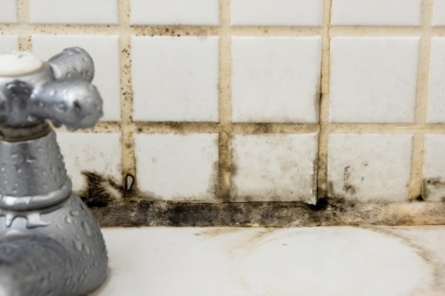
When your home gets a case of mold, your first instinct might be to clean it yourself. Common types of mold which can grow out of control indoors are Stachybotrys chartarum and Stachybotrys chlorohalonata – also informally known as “black mold”. Trying to figure out how to clean up black mold on your own, however, is a dangerous idea for homeowners. You face a real possibility of not fully correcting the problem, and in the process you can expose yourself and others to a variety of health hazards.
Let’s take a look at why black mold removal is best left to the professionals.
Risks of Being Exposed to Black Mold
Black mold can wreak havoc not just on your home, but on your health, as well. Exposure to black mold can cause physical problems like respiratory distress, headaches, and eye irritation. Many experience neurological issues when exposed to black mold, such as brain fog, memory loss, and seizures. Because of the harmful effects of black mold, you are opening yourself to a wide range of adverse health issues if you attempt to remove it on your own instead of leaving it to the professionals who have the gear and know-how for black mold removal.
DIY Black Mold Removal Risks
First and foremost, it's important to realize that black mold can lead to health problems and those with allergies, asthma, and compromised immune systems are especially vulnerable to health threats from black mold and the toxins it can create. It's no wonder why professional crews use respirators, full-body suits and other specialized equipment to limit their exposure.
In addition to taking into account the obvious health risks, a home mold removal service knows exactly how to tackle a black mold outbreak and is able to completely eradicate your mold problem with equipment and proven techniques. They're experts in the multitude of scenarios and ways in which black mold can pose trouble to a homeowner intent on DIY mold cleanup, like failing to properly clean up after, missing areas that might not be visible, or failing to treat the root cause of the black mold. You want to ensure that you are removing the mold itself, not just cleaning the surface and removing the stain.
Dangerous Black Mold Removal Scenarios
Removing black mold is dangerous and requires professional experience. Here are dangerous scenarios that can occur with black mold removal.
1. Black mold that covers a large area. As the U.S. Environmental Protection Agency points out, the size of your black mold infestation will influence the equipment and methods needed to properly contain it. The larger the contamination, the more complex a cleanup can be. An expert will know the best way to tackle the mold infestation based on its size, location, cause and other factors.
Keep in mind that improper cleanup of a small outbreak can actually make things worse by releasing mold spores into the air, failing to address the root cause and other common mistakes that homeowners can make. Remember, black mold penetrates surfaces to where you can’t see it, and bleach can’t kill it. Let a pro handle the job right the first time.
2. Black mold that develops after flooding. If you've experienced a flood in your home, from a burst pipe, faulty appliance or roof leak, you might assume that once you've cleaned up the standing water you're all set. If any mold develops later it can appear and spread quickly even in small areas impacted by flooding. Without fully eradicating the black mold outbreak and completely eliminating its source of moisture, the problem won't go away. That's where the experience and know-how of a professional comes in handy.
3. Black mold in your air system. If you see visible black mold on your vent covers or air conditioning slats, you can try to wipe down those particular areas. However, this visible mold may be indicative of a system-wide infestation which may be circulating mold throughout your house. You need evaluation by a professional to find out if there’s a problem and take care of it from the inside out. A professional service provider knows how to detect and clean up black mold even when it's hiding inside those hard-to-reach areas.
4. Black mold that's growing on wood. Sometimes moldy wood is salvageable, and other times it needs to be replaced. In many cases, moldy wood may be hiding in a part of your home that you can't see, such as inside walls or in your crawlspace. Do you know which scenario you're dealing with? An expert will.
Leave Black Mold Removal To The Experts
The dangers of DIY black mold removal may not only affect your home, but your health as well. If you are experiencing black mold in your home or business, this is not the time to put your DIY skills to the test. It’s time to hire a team of experts.
ServiceMaster Restore offers mold removal for homes and businesses, with our professionals having over 65 years of experience in the field. We’ll work with you to determine the extent of the damage, what the next steps will be, and work fast to get your home back to normal. Call 1-800-RESPOND or reach out to your nearest ServiceMaster Restore location to find out how we can help you.
